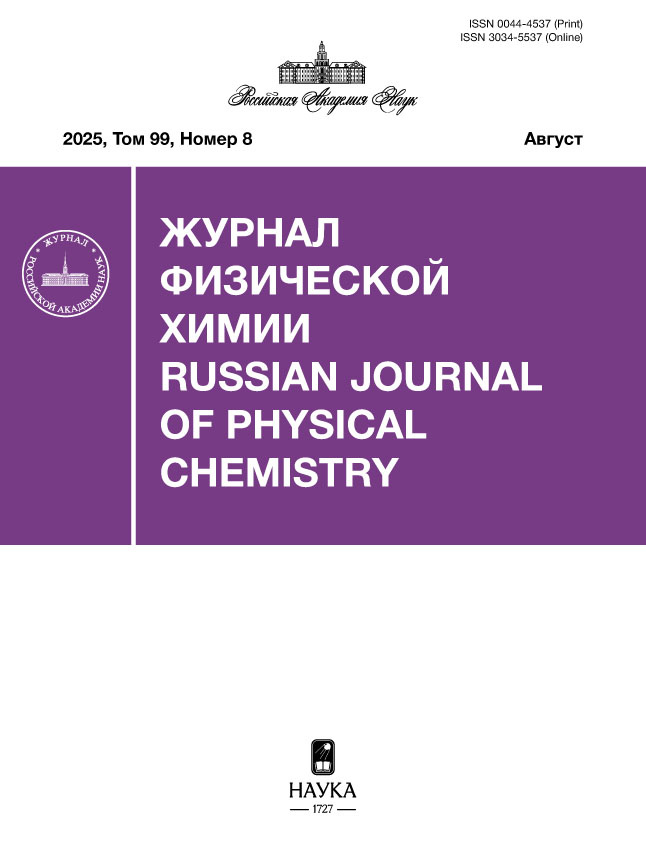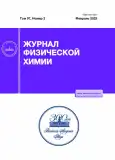Влияние различных факторов на предсказание констант кислотности низкомолекулярных органических соединений с помощью машинного обучения
- Авторы: Матюшин Д.Д.1, Шолохова А.Ю.1, Буряк А.К.1
-
Учреждения:
- Институт физической химии и электрохимии им. А.Н. Фрумкина РАН
- Выпуск: Том 97, № 2 (2023)
- Страницы: 262-269
- Раздел: ХЕМОИНФОРМАТИКА И КОМПЬЮТЕРНОЕ МОДЕЛИРОВАНИЕ
- Статья получена: 15.10.2023
- Статья опубликована: 01.02.2023
- URL: https://journals.rcsi.science/0044-4537/article/view/136524
- DOI: https://doi.org/10.31857/S0044453723020152
- EDN: https://elibrary.ru/ECXZUI
- ID: 136524
Цитировать
Полный текст
Аннотация
Изучено влияние способа стандартизации структуры молекулы и параметров расчета молекулярных отпечатков пальцев на точность предсказания константы кислотности. Показано, что стандартизация, т.е. выбор таутомерной формы и способа записи структуры молекулы, с помощью OpenEye QuacPac дает наилучшие результаты, однако библиотека RDKit позволяет достигнуть сравнимой точности. Установлено, что способ выбора зарядового состояния оказывает большое влияние на точность предсказания. Исследована точность предсказания в зависимости от радиуса (размера подструктур) круговых молекулярных отпечатков пальцев, лучшие результаты достигаются при использовании радиуса r = 2. Использован случайный лес – один из алгоритмов машинного обучения. Кроме того, показано, что метод опорных векторов также дает достаточно высокую точность при оптимизации гиперпараметров.
Ключевые слова
Об авторах
Д. Д. Матюшин
Институт физической химии и электрохимии им. А.Н. Фрумкина РАН
Email: shonastya@yandex.ru
Россия, 119071, Москва
А. Ю. Шолохова
Институт физической химии и электрохимии им. А.Н. Фрумкина РАН
Email: shonastya@yandex.ru
Россия, 119071, Москва
А. К. Буряк
Институт физической химии и электрохимии им. А.Н. Фрумкина РАН
Автор, ответственный за переписку.
Email: shonastya@yandex.ru
Россия, 119071, Москва
Список литературы
- Baltruschat M., Czodrowski P. // F1000Res. 2020. V. 9. P. 113. https://doi.org/10.12688/f1000research.22090.2
- Mansouri K., Cariello N.F., Korotcov A. et al. // J. Cheminform. 2019. V. 11. № 1. P. 60. https://doi.org/10.1186/s13321-019-0384-1
- Mayr F., Wieder M., Wieder O. et al. // Front. Chem. 2022. V. 10. P. 866585. https://doi.org/10.3389/fchem.2022.866585
- Lu Y., Anand S., Shirley W. et al. // J. Chem. Inf. Model. 2019. V. 59. № 11. P. 4706. https://doi.org/10.1021/acs.jcim.9b00498
- Rupp M., Korner R., Tetko I. // CCHTS. 2011. V. 14. № 5. P. 307. https://doi.org/10.2174/138620711795508403
- Lionta E., Spyrou G., Vassilatis D. et al. // CTMC. 2014. V. 14. № 16. P. 1923. https://doi.org/10.2174/1568026614666140929124445
- Bahi M., Batouche M. // 2018 3rd International Conference on Pattern Analysis and Intelligent Systems (PAIS). Tebessa: IEEE, 2018. P. 1–5. https://doi.org/10.1109/PAIS.2018.8598488
- Yang Q., Ji H., Fan X. et al. // J. Chromatogr. A. 2021. V. 1656. P. 462536. https://doi.org/10.1016/j.chroma.2021.462536
- Fedorova E.S., Matyushin D.D., Plyushchenko I.V. et al. // J. Chromatogr. A. 2022. V. 1664. P. 462792. https://doi.org/10.1016/j.chroma.2021.462792
- Milyushkin A.L., Matyushin D.D., Buryak A.K. // J. Chromatogr. A. 2020. V. 1613. P. 460724. https://doi.org/10.1016/j.chroma.2019.460724
- Zenkevich I.G., Nikitina D.A. // Russ. J. Phys. Chem. A. 2021. V. 95. № 2. P. 395. https://doi.org/ Зенкевич И.Г., Никитина Д.А. // Журн. физ. химии. 2021. Т. 95. № 2. С. 285.https://doi.org/10.1134/S003602442102028X
- Angra S., Ahuja S. // 2017 International Conference on Big Data Analytics and Computational Intelligence (ICBDAC). Chirala, Andhra Pradesh, India: IEEE, 2017. P. 57. https://doi.org/10.1109/ICBDACI.2017.8070809
- Mansouri K., Grulke C.M., Judson R.S. et al. // J. Cheminform. 2018. V. 10. № 1. P. 10. https://doi.org/10.1186/s13321-018-0263-1
- Parmar A., Katariya R., Patel V. // International Conference on Intelligent Data Communication Technologies and Internet of Things (ICICI) 2018 / Ed. Hemanth J., Fernando X., Lafata P. et al. Cham: Springer International Publishing, 2019. V. 26. P. 758. https://doi.org/10.1007/978-3-030-03146-6_86
- Cereto-Massagué A., Ojeda M.J., Valls C. et al. // Methods. 2015. V. 71. P. 58. https://doi.org/10.1016/j.ymeth.2014.08.005
- Rogers D., Hahn M. // J. Chem. Inf. Model. 2010. V. 50. № 5. P. 742. https://doi.org/10.1021/ci100050t
- Xiong J., Li Z., Wang G. et al. // Bioinformatics / Ed. by Z. Lu. 2022. V. 38. № 3. P. 792. https://doi.org/10.1093/bioinformatics/btab714
- Pan X., Wang H., Li C. et al. // J. Chem. Inf. Model. 2021. V. 61. № 7. P. 3159. https://doi.org/10.1021/acs.jcim.1c00075
- Reza Ghiasi, Zamani A., Shamami M.K. // Russ. J. Phys. Chem. A. 2019. V. 93. № 8. P. 1537. https://doi.org/10.1134/S0036024419080247
- Prasad S., Huang J., Zeng Q. et al. // J. Comput. Aided Mol. Des. 2018. V. 32. № 10. P. 1191. https://doi.org/10.1007/s10822-018-0167-1
- Pracht P., Wilcken R., Udvarhelyi A. et al. // J. Comput. Aided Mol. Des. 2018. V. 32. № 10. P. 1139. https://doi.org/10.1007/s10822-018-0145-7
- Pedregosa F., Varoquaux G., Gramfort A. et al. Scikit-learn: Machine Learning in Python: arXiv:1201.0490. arXiv, 2018. https://arxiv.org/abs/1201.0490
- Bento A.P., Hersey A., Félix E. et al. // J. Cheminform. 2020. V. 12. № 1. P. 51. https://doi.org/10.1186/s13321-020-00456-1
- Chang C.-C., Lin C.-J. // ACM Trans. Intell. Syst. Technol. 2011. V. 2. № 3. P. 1. https://doi.org/10.1145/1961189.1961199
- Willighagen E.L., Mayfield J.W., Alvarsson J. et al. // J. Cheminform. 2017. V. 9. № 1. P. 33. https://doi.org/10.1186/s13321-017-0220-4
- https://github.com/czodrowskilab/Machine-learning-meets-pKa
- Heller S., McNaught A., Stein S. et al. // J. Cheminform. 2013. V. 5. № 1. P. 7. https://doi.org/10.1186/1758-2946-5-7
- Matyushin D.D., Buryak A.K. // IEEE Access. 2020. V. 8. P. 223140. https://doi.org/10.1109/ACCESS.2020.3045047
Дополнительные файлы














